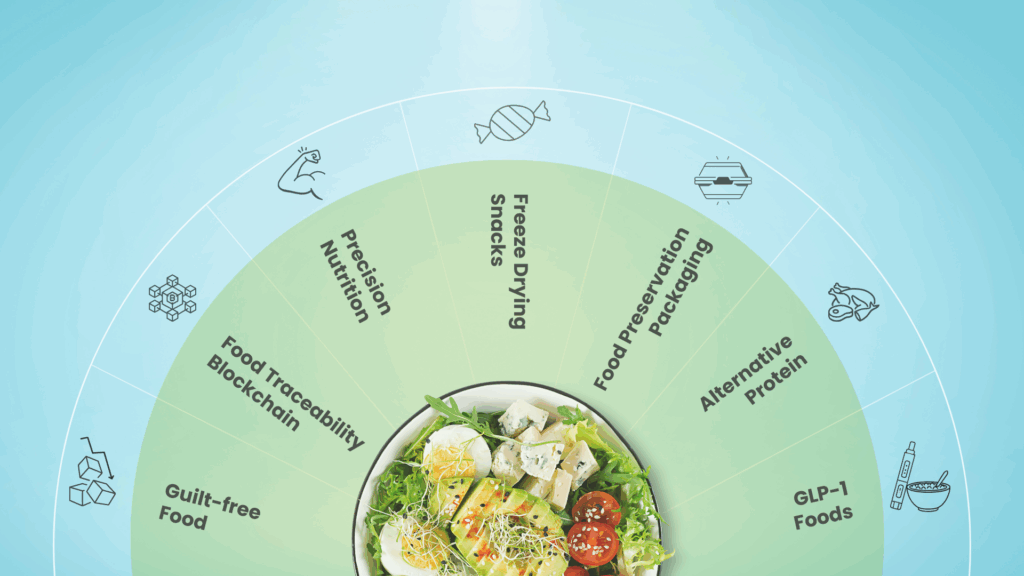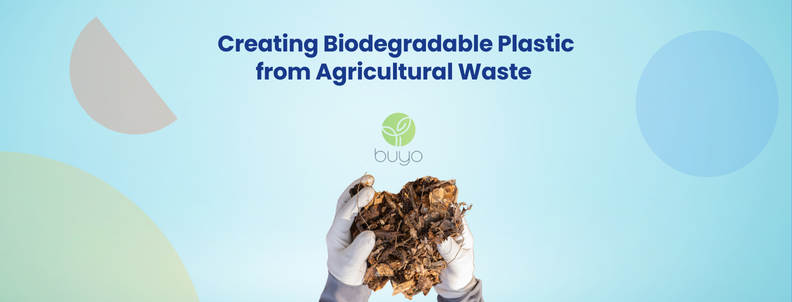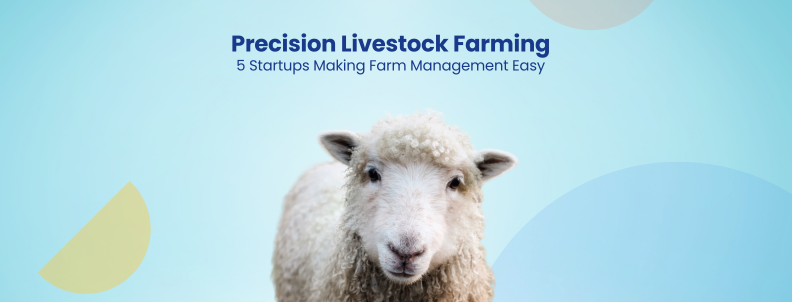The first step towards innovation is brainstorming creative ideas. The second is finding ways to implement them in your product/service to improve it. However, brainstorming does not always guarantee solutions. Especially if you don’t know how to do it right. What do I mean by that? Stick with me, and I’ll share where your team goes wrong while brainstorming ideas and how they can avoid it using SCAMPER.
Generating new ideas is the most important and toughest part of the innovation process. This is the first step towards a better product. However, developing a new idea or improving an existing product by closing the opportunity gap can become challenging.
Often, R&D teams keep brainstorming without any direction. While this brings a lot of ideas to the table, most of them are either incompatible with the product line or the company model itself. In one of our previous articles on idea generation, we discussed how your R&D can use the KJ method to innovate faster. But what if your team has exhausted all the possible searches and is still unable to come up with any new ideas at all?
In situations when generating ideas proves to be difficult and innovating becomes a challenge, the SCAMPER model can come in handy.
Are you struggling to come up with new ideas?
Our idea generation techniques report can help! This comprehensive guide covers a variety of proven techniques for generating creative and innovative ideas. Fill out the form to request for the report:

So, What is SCAMPER?
SCAMPER is a brainstorming technique devised by combining 7 thinking prompts to generate ideas to improve a product or service. SCAMPER is a mnemonic that stands for:
- Substitute
- Combine
- Adapt
- Modify/Magnify/Minify
- Put to another use
- Eliminate
- Reverse/Rearrange
These 7 thinking prompts guide brainstorming for creative ideas to improve a product/service. In each prompt, you need to ask a set of questions to your team and come up with creative ideas to answer them.
It can be used by students, researchers, or even corporate teams as a structured thinking process.
Let’s explore how to use Scamper to improve a product, an idea, or a service.
How can you use SCAMPER to generate ideas?
The 7 methods listed in the SCAMPER describe the different ways to generate ideas. Questions that accompany each of these thought processes can help you come up with several solutions to a single problem. For example, the A in SCAMPER stands for Adapt. It will help you determine the parts or areas where you can adapt to make your product/service better. We will discuss each of these methods briefly in the coming paragraphs.
It’s not important to employ each and every method described in SCAMPER, and it’s also acceptable if one solution fulfills multiple scenarios. The important thing is to see what fits your need.
How to start?
Are you ready with a pen and paper? Great!
Now, think of a problem you would like to solve or something you want to improve. It could be anything, a service, a product, or even an idea for a product that you plan to work on in the future.
Done?
Well then, it’s SCAMPER time!
All you need to do is, scroll through each method listed in SCAMPER one by one, asking relevant questions and noting the solutions that come to mind. Let’s start with the very first prompt – Substitute.
Substitute
This is a method to think of solutions by substituting parts, materials, people, or areas in your problem or product to improve it. Looking for areas that you can substitute can often help you come up with ideas about new features or reduce the problem.
The question you can ask yourself could be:
- What parts/people/materials can I substitute to improve the working of my product?
- Can I substitute one part for another in my product to improve it?
- What other products in the market can you substitute with your own products?
- What products in the market can substitute your product?
As a real-world example, earlier this year, Boeing revealed their plans to use 3D printed parts in their 787 Dreamliner aircraft instead of traditionally manufactured ones. This move is not only going to save them millions in manufacturing costs but the 3D-printed parts will be much stronger and lighter as compared to traditionally manufactured ones.
Were you able to find some substitutes that can enhance your product or service? If yes, then you’re on a good start.
If not, let’s move ahead to the next prompt.
Combine
Thinking about combining one or more parts of your problem into one can actually help you find a simple solution or even solve multiple problems at once. Combining multiple innovative products/ideas can help you achieve better outputs.
Questions in this scenario can be:
- What parts/materials can you combine to increase the potential of your product?
- Can you combine the initiative behind this product with another one?
- What to expect if you merge this product with another one?
Electric hybrid vehicles are a great example of this prompt. In the earlier 90s when fuel prices were rising continuously, electric hybrid cars proved to be the perfect solution. By combining two different technologies (internal combustion and electric engine), researchers at that time not only improved the efficiencies of vehicles but gave birth to a standard that is still a major part of the automobile industry.
Should we move on to the next one? Let’s go.
Adapt
Adaption is the most common strategy in business when focusing on improving a product. You can think of solutions where adapting your product to some other application might help in increasing its use.
Ask yourself questions like:
- How can you adapt your product to solve a wider range of problems?
- Think of areas most important to you and ways you can adapt your product to target them.
- Can you adapt your product to some specific needs?
- Can you adapt a new process? Be it for making, marketing, searching, etc.?
- What other products are like yours that you can easily adapt to?
No product or service can survive the ever-changing industry standards if it fails to adapt. You will find numerous businesses/products that failed to adapt and hence failed to succeed.
For a real-world example, Blackberry mobile could be the best candidate. Blackberry’s failure to adapt to the new standards that the market was moving towards resulted in the demise of the company’s smartphone business. And should I even begin with Walmart not moving on from its brick-and-mortar business model or the bankruptcy of Blockbuster?
On the other hand, companies like Samsung and HTC quickly saw the opportunities to adapt to consumer demands of big screens and faster processors and claimed a great market share. Samsung is still a market leader in smartphones, while Blackberry almost vanishes. Similarly, take Amazon and Netflix compared to Walmart and Blockbuster, respectively.
‘Adapt or Die,’ the saying stands true for humans and businesses alike!
See if your product or service can ride the wave of change, and make sure to grab the opportunity to adapt.
On to the next one now.
Modify/Magnify/Minify
Thinking of small modifications in the product is the most common way of solving a problem within. For example, if you want to increase the life of a particular product, you can think about modifying the materials to increase its structural strength to make it last longer.
This is just a theoretical example. You can also think about enhancing or diminishing the parts of the product to improve it in different ways. Questions you can ask yourself in this thinking method are:
- Which parts of your product* can you modify to make it more useful?
- What qualities can you emphasize in your product?
- Can you modify your product in a way to increase its application areas?
*Replace product with service if required. But you got the hang of it, right?
In the search for an example of this prompt, I stumbled upon Japanese cube watermelons. Pretty famous for their shape, the cube watermelons are just another innovative idea from Japan. By growing them in cubical boxes, these watermelons become easy to transport and store.

Even though small, this change in the shape of watermelons has gained a lot of attention from the public and has become pretty famous in the USA, too. The upside is they are pretty expensive and add a lot of revenue compared to traditional watermelons.
The next thing to look at is if you can expand your product or service to some other application areas.
Put to another use
What other problems can your product solve? Thinking of an alternate application can often help you in increasing the potential of your product. This can also be applied to problems. Think of areas where similar problems may exist. This way, you can look for solutions in that area and incorporate them into your domain/problem/product.
The questions that this thinking process will bring could be:
- Can my product be used in any other domain?
- Can a feature of my product solve a problem that might not have crossed my mind before?
- Apart from existing users, who else can use this?
Take Driverless cars, for example. When the autonomous vehicle idea was tossed into the market, it promoted the idea of replacing drivers with computers. Still, autonomous vehicles proved to be a great solution for many other industries, especially the automatic guided vehicles actively used in manufacturing and logistics units.
From public transit to the shipping industry, driverless cars have greatly impacted us. Similarly, autonomous vehicle technology is not limited to vehicles on the road. Think about completely autonomous air travel or watercraft.
So, ask your team what more your product can do.
While you gather answers to this, let’s talk about the next prompt.
Eliminate
Elimination method works exceptionally well in solving problems. Think of the solution to a problem by reducing different aspects of it. Or, in the case of a product, think of ways to simplify it or its purpose. Elimination can help you remove unnecessary or less important parts.
Here are a few examples of questions you can ask yourself when incorporating the elimination thinking model:
- What features can I remove without affecting the core purpose of my product?
- What can I eliminate from the delivery/manufacturing process?
- Can I eliminate any part of the problem/product to increase its purpose/scope?
Xiaomi used an elimination strategy and took over the smartphone market by storm. Upon analyzing Xiaomi’s business strategy, we found that they eliminated the vendors and retail stores from their process and adopted online flash sales as the sole method to sell their products.
Also, they avoided spending money on advertisements and other major marketing campaigns and only used brand awareness from online forums and user communities. These strategies helped them in producing smartphones with high-end specifications at affordable costs, which resulted in millions of their devices getting sold in just a few hours.
Great strategy, right?
Now let’s put the R in SCAMPER.
Reverse/Rearrange
It’s a wise practice to break your problem into small parts and rearrange them to figure out a solution. Even changing the whole perspective can help you in finding hidden solutions. Try to think of ways you can rearrange the order, process, or steps in a process to obtain a better output. To help you, here are a few example questions:
- What if we try the bottom-up approach?
- Can we reverse how we manufacture/make/market our product/service?
- Can we rearrange the parts/people involved in the process?
Going through all the prompts will leave you with dozens of questions and answers to them. Now, all you need to do is filter identical solutions. You’ll be left with a list of actionable ideas to improve your product or solve your problem.
SCAMPER can help you remember different ways you can find creative ideas. It’s a systematic approach to brainstorming to find innovative solutions.
Was this exercise helpful to your R&D team? Let us know what other strategies your team follows in coming up with innovative ideas in the comment section below!
And hey, here’s another strategy you can use to accelerate innovation in your company!










